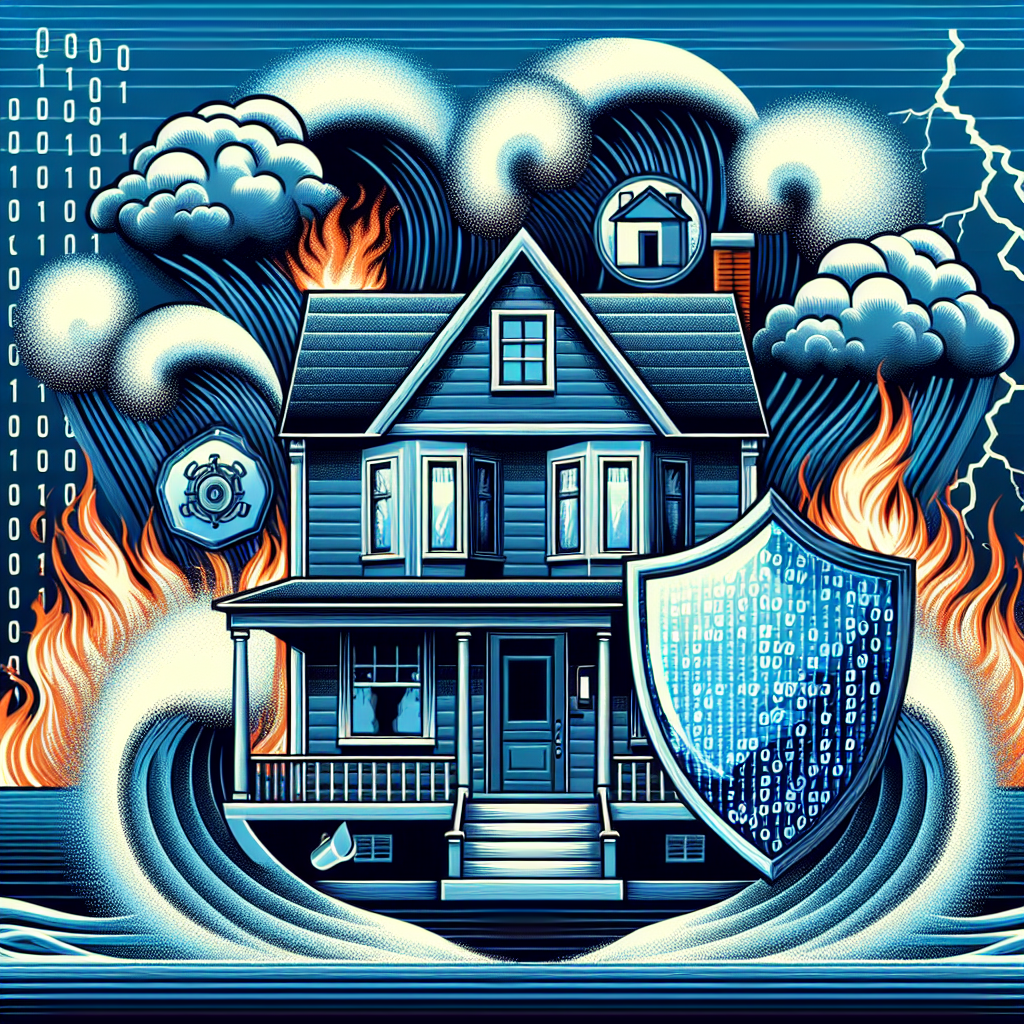Filed under Home Insurance on
How Much Insurance Coverage Do I Need for My Home

If you’ve ever wondered, “How Much Insurance Coverage Do I Need for My Home,” you’re not alone. Home insurance isn’t a one-size-fits-all product, and small decisions you make on coverage limits and endorsements can dramatically change how well you’re protected when something goes wrong. This guide walks you through a practical, data-informed way to set coverage that keeps pace with rebuilding costs, liability risks, and today’s changing climate—without overpaying for what you don’t need.
What a Home Insurance Policy Typically Covers
Before fine-tuning your limits, it helps to understand how a standard policy (often an HO-3 or HO-5) is structured. Each coverage section plays a specific role at claim time.
Dwelling (Coverage A)
This is the limit to rebuild your home after a covered loss. It should reflect full reconstruction cost, not the real estate market value. Rebuilding cost is driven by local labor, materials, architectural complexity, and newer building code requirements.
Other Structures (Coverage B)
Think detached garages, fences, sheds, and pool houses. This is typically 10 percent of the dwelling limit, though you can adjust it up if you have significant outbuildings.
Personal Property (Coverage C)
Furniture, clothing, electronics, and most belongings fall here. Many policies set this between 50 and 70 percent of the dwelling limit. Seek replacement cost coverage so you’re reimbursed for what it costs to buy new, not the depreciated value.
Loss of Use/Additional Living Expense (Coverage D)
If you can’t live at home after a covered loss, this pays for temporary housing and extra costs of living. Commonly 20 to 30 percent of the dwelling limit, but in high-cost rental markets you may need more.
Personal Liability (Coverage E)
Protects your assets and future earnings if you’re legally responsible for injuries or property damage to others. Standard limits start at 100,000 to 300,000 dollars, but many homeowners move to 500,000 dollars or higher and add an umbrella policy for extra protection.
Medical Payments to Others (Coverage F)
Pays for minor medical bills if someone is hurt on your property, regardless of fault. Typical limits are 1,000 to 5,000 dollars.
Endorsements can fill common gaps: water/sewer backup, ordinance or law (to meet updated building codes), equipment breakdown, service line, scheduled valuables, and depending on your location, separate flood or earthquake policies.
Framing the Question: How Much Insurance Coverage Do I Need for My Home?
Answering “How Much Insurance Coverage Do I Need for My Home” starts with your rebuild cost, then layers in belongings, lifestyle risks, local hazards, and your tolerance for deductibles. Use this step-by-step framework to make confident, defensible choices.
1) Calculate a realistic rebuild cost for your dwelling
Rebuild estimates can lag reality if they’re not updated. According to building cost data reported by construction analytics firms and trends tracked by the Bureau of Labor Statistics Producer Price Index, material and labor volatility since 2020 has pushed many local rebuild costs 20 to 40 percent higher than pre-pandemic baselines, with regional spikes after severe weather events.
- Start with square footage × local cost per square foot for similar quality construction. Local builders, appraisers, or insurer replacement cost tools can supply a credible range.
- Adjust for features: custom cabinetry, imported tile, high-end windows, complex rooflines, solar arrays, finished basements, or specialty foundations increase costs.
- Account for “demand surge” after disasters. Extended replacement cost endorsements (e.g., 25 to 50 percent above your limit) or guaranteed replacement cost can safeguard you when everyone in town is rebuilding at once.
- Add ordinance or law coverage. Older homes often need costly upgrades to meet current codes; a dedicated limit helps cover the gap.
Goal: Set the dwelling limit to the full reconstruction cost in today’s dollars, then add an inflation guard and, where available, an extended or guaranteed replacement endorsement.
2) Inventory your personal property
Documenting your belongings is easier than ever—walk through your home with a smartphone, narrate what you see, and save receipts for big-ticket items.
- Aim for a limit that comfortably replaces what you own. Many households fall in the 50 to 70 percent of dwelling limit range, but high-end electronics, tools, or extensive wardrobes may require more.
- Choose replacement cost coverage over actual cash value to avoid depreciation deductions.
- Mind special sub-limits. Jewelry, watches, firearms, collectibles, fine art, and cash often have low caps. Schedule items individually for broader protection and higher limits.
3) Right-size your liability coverage
Liability is both affordable and critical. Consider your total assets and future income. Pools, trampolines, aggressive dog breeds, short-term rentals, and frequent entertaining can increase your risk profile.
- Consider at least 300,000 to 500,000 dollars in personal liability.
- Add a personal umbrella policy of 1 to 5 million dollars if you have meaningful assets or elevated risk factors.
4) Check your loss-of-use needs
Could you rent a comparable home in your market while repairs are made? Rents and hotel rates vary widely. If you’d need 12 to 24 months of temporary housing, consider boosting this limit or choosing a policy that uncaps it by time but caps by total amount.
5) Close common coverage gaps
- Water backup: Covers sump pump failure or sewer backup. A frequent, costly loss that standard policies often exclude or limit.
- Service line: Pays to repair underground pipes and wiring from the street to your home.
- Equipment breakdown: Protects HVAC, major appliances, and smart-home systems from mechanical/electrical failure.
- Ordinance or law: Funds code-required upgrades during repair.
- Flood and earthquake: Typically excluded; buy separate policies if your geography suggests risk. FEMA reports that just one inch of water can cause tens of thousands in damage.
6) Set a deductible strategy you can live with
Higher deductibles lower premiums but increase out-of-pocket risk. Many homeowners choose 1,000 to 2,500 dollars for all-peril deductibles; wind/hail or named-storm deductibles can be percentages of the dwelling limit (1 to 5 percent). Ensure your emergency fund covers the highest applicable deductible.
7) Verify policy form and settlement terms
- HO-5 offers broader, often open-perils coverage on both dwelling and personal property; HO-3 is more common but may be narrower on personal property.
- Replacement cost vs. actual cash value on the dwelling and contents makes a major difference at claim time.
- Watch for roof surfacing limitations, cosmetic damage exclusions, or depreciation schedules on older roofs.
A Worked Example: Turning the Framework into Numbers
Let’s apply this to a hypothetical, moderately upgraded 2,100-square-foot home with a two-car garage in a suburban market.
- Dwelling rebuild cost: Local builders quote 215 to 240 dollars per square foot for similar quality. You choose 230 dollars × 2,100 square feet = 483,000 dollars. Add 10 percent for unique finishes and complex rooflines = 531,000 dollars. You also buy 25 percent extended replacement, giving effective headroom to about 664,000 dollars in a worst-case rebuild.
- Other structures: 10 percent of dwelling = 53,000 dollars. You increase to 75,000 dollars to account for an oversized detached workshop and extensive fencing.
- Personal property: Inventory suggests replacement value near 350,000 dollars. That’s roughly 66 percent of the dwelling limit, within the typical range. You select replacement cost coverage and schedule a 15,000-dollar engagement ring and a 12,000-dollar watch.
- Loss of use: Rentals in your area run high. You set a 24-month time cap with a dollar limit equal to 30 percent of the dwelling = about 159,000 dollars.
- Liability: You select 500,000 dollars due to a pool and frequent gatherings and add a 1 million dollar umbrella policy.
- Deductibles: 2,000 dollars all-peril deductible. Wind/hail deductible set at 2 percent of the dwelling limit due to severe storm frequency; you confirm your emergency fund can handle it.
- Endorsements: Water backup at 25,000 dollars limit, ordinance or law at 20 percent of Coverage A, service line at 20,000 dollars, and equipment breakdown included.
This scenario demonstrates how answering “How Much Insurance Coverage Do I Need for My Home” is less about copying a rule of thumb and more about reflecting your home’s true rebuild cost, your belongings, and your personal risk profile.
Trends That Should Inform Your Coverage Choices
Insurance doesn’t exist in a vacuum. Several industry trends are reshaping what adequate coverage looks like today.
- Construction inflation and volatility: The Bureau of Labor Statistics has reported substantial swings in lumber, steel, and concrete pricing since 2020. Rebuild costs can surge after regional catastrophes, which is why inflation guard and extended replacement endorsements matter.
- Climate and catastrophe risk: Hurricanes, convective storms, wildfires, and severe hail events have grown more frequent or intense in some regions, based on catastrophe modeling firms and reinsurers’ annual reports. Expect higher wind/hail deductibles, stricter roof underwriting, and location-specific exclusions in some markets.
- Reinsurance pressures: When reinsurers raise rates, primary carriers often adjust deductibles, tighten underwriting, or nudge premiums higher. Ensuring accurate valuations can help preserve eligibility with preferred carriers.
- Smart-home mitigation: Leak detection, monitored security, and automatic water shutoff devices can reduce losses and sometimes earn premium credits. Insurers increasingly encourage proactive risk reduction.
- Roof age and material: Many carriers price aggressively off roof condition. Impact-resistant shingles can reduce hail losses and sometimes lower your premium.
- Short-term rentals: Home-sharing activity may require an endorsement or a landlord policy form to avoid coverage gaps. Always disclose to your insurer.
Common Mistakes That Lead to Painful Shortfalls
Even conscientious homeowners can fall into predictable traps. Avoid these pitfalls:
- Insuring to market value: Market value bakes in land value and demand. Your policy should be based on reconstruction cost only.
- Skipping extended replacement cost: When your town rebuilds after a disaster, labor and materials spike. An extension of 25 to 50 percent can be a financial lifesaver.
- Accepting actual cash value on contents: Depreciation can be severe on furniture and electronics. Replacement cost is usually worth the incremental premium.
- Ignoring code upgrades: Older homes almost always need costlier materials and methods to meet current code. Ordinance or law coverage handles this.
- Forgetting specialty items: Jewelry, collectibles, instruments, and fine art frequently exceed sub-limits. Schedule them.
- Underestimating loss of use: Temporary housing can cost more and last longer than expected. Check your local rental market and contractor backlogs.
- Assuming flood is included: It’s not. Flood is a separate policy in most cases. The same goes for earthquake.
- Low water-backup limits: One backed-up drain can wreck a finished basement. Raise this endorsement if you have below-grade living areas.
Special Situations That Change Your Answer
Condominiums (HO-6)
Your association’s master policy may cover the shell of your unit, but you’re typically responsible for interior finishes, personal property, and liability. Review your bylaws—“all-in” vs. “walls-in” coverage can shift what you need. Add loss assessment coverage for your share of association deductibles after a covered loss.
Landlords and Short-Term Rentals
Renting your home creates exposures a standard owner-occupied policy may not cover. Consider a landlord policy or a home-sharing endorsement that addresses tenant-caused damage, loss of rental income, and liability.
High-Value or Custom Homes
Architectural detail, imported finishes, and custom craftsmanship often exceed standard coverage assumptions. Seek guaranteed replacement cost, higher sub-limits, and agreed value for specialty features.
Older or Historic Homes
Preservation rules and period-specific materials can increase rebuild costs. A policy form tailored to historic properties and robust ordinance or law coverage is essential.
Wildfire and Wind-Borne Debris Zones
Defensible space, fire-resistant materials, and ember-resistant vents can reduce risk and maintain insurability. In hurricane-prone areas, shutters, roof tie-downs, and impact-rated windows can help eligibility and pricing.
Frequently Asked Questions
How Much Insurance Coverage Do I Need for My Home if I have a mortgage?
Lenders require insurance but typically focus on protecting the dwelling (not necessarily all upgrades or your contents). The correct limit is the full reconstruction cost, which may be higher than the loan balance or the home’s purchase price. Don’t default to the mortgage amount; use a rebuild-based valuation.
Does market value affect “How Much Insurance Coverage Do I Need for My Home”?
Not directly. Market value reflects land and demand. Your policy pays to rebuild structures and replace belongings. Use reconstruction cost tools and builder input rather than a Zestimate or recent sales comps.
How often should I review my limits?
At least annually, and anytime you remodel, finish a basement, add a deck, convert an attic, or buy big-ticket items. If local contractors report extended backlogs or price increases, update your valuation promptly.
What is the 80 percent rule?
Some policies require you to insure to a minimum percentage (often 80 percent) of the rebuild cost or face a penalty on partial losses. The best practice is to insure to 100 percent of today’s reconstruction cost and add extended or guaranteed replacement if available.
Why are wind/hail or named-storm deductibles percentages?
To align risk-sharing in catastrophe-prone areas. A 2 percent hurricane deductible on a 500,000-dollar dwelling limit means you’d pay the first 10,000 dollars on a hurricane claim. Ensure your savings covers the largest applicable deductible.
Is an umbrella policy worth it?
If you have meaningful assets or higher-risk exposures (pool, young drivers in the household, frequent hosting), a 1 to 5 million dollar umbrella is a cost-effective way to boost liability protection above home and auto limits.
Can smart-home devices lower premiums?
Often, yes. Monitored leak detection, automatic shutoff valves, and security systems can reduce loss frequency and sometimes earn discounts. More importantly, they minimize disruption if a loss occurs.
A Practical Checklist to Bring to Your Agent
Show up with specifics to get a tailored policy instead of an off-the-shelf estimate.
- Square footage, year built, foundation type, roof material/age, and notable upgrades
- Quality level of finishes: builder grade, mid-range, or custom
- Photos or a brief video walkthrough and any appraisal or contractor quotes
- Inventory highlights for high-value personal property and items to schedule
- Proof of mitigation: water sensors, security, impact-resistant roofing, wildfire hardening
- Whether you rent rooms, list on home-sharing platforms, or run a home business
- Your desired deductibles and maximum out-of-pocket comfort level
- Questions about endorsements: water backup, ordinance or law, service line, equipment breakdown
- Local hazards: flood zones, earthquake risk, wildfire interface, wind/hail patterns
- Ask for replacement cost on dwelling and contents, HO-5 if available, and extended or guaranteed replacement
Putting It All Together
So, How Much Insurance Coverage Do I Need for My Home? Start with an accurate rebuild number for the dwelling, then stack on the pieces that protect your real life: enough personal property to replace what you own, liability that matches your assets and exposures, loss of use suited to your local rental market, and endorsements that close predictable gaps. Finally, choose deductibles you can afford in an emergency, and update your policy whenever the home or your lifestyle changes.
In practical terms, many homeowners land on:
- Dwelling at 100 percent of current reconstruction cost, plus inflation guard and 25 to 50 percent extended replacement if available
- Other structures at 10 percent of dwelling (more if you have substantial outbuildings)
- Personal property at 60 to 70 percent of dwelling with replacement cost settlement, plus scheduled items for valuables
- Loss of use at 20 to 30 percent of dwelling, adjusted for your rental market and timeline
- Personal liability at 500,000 dollars or higher, with a 1 to 5 million dollar umbrella when warranted
- Water backup, ordinance or law, service line, and equipment breakdown endorsements as needed
Use this framework to answer “How Much Insurance Coverage Do I Need for My Home” with confidence, and treat your policy like a living document. The construction market, climate, and your household change over time—your coverage should evolve, too. A short annual check-in with a licensed agent or broker, backed by fresh rebuild estimates and a quick belongings review, is often enough to keep you protected and on budget.
One final note: Insurance is regulated at the state level, and policy forms vary by carrier. Confirm exact terms, exclusions, and endorsements with your insurer. With a little diligence up front, you’ll be set to answer “How Much Insurance Coverage Do I Need for My Home” in a way that protects both your house and your peace of mind.





